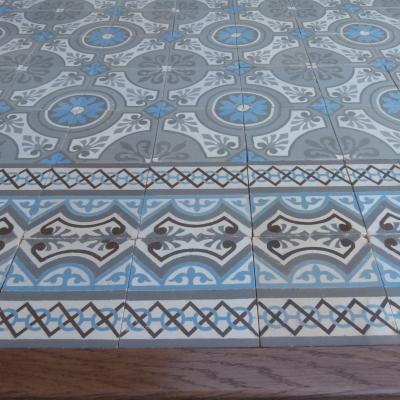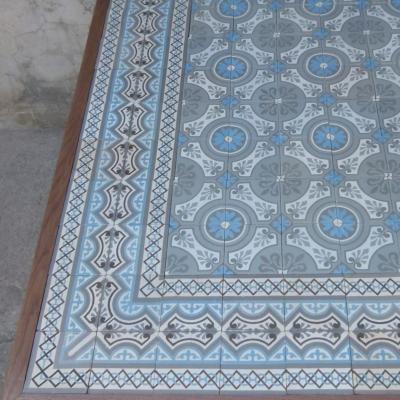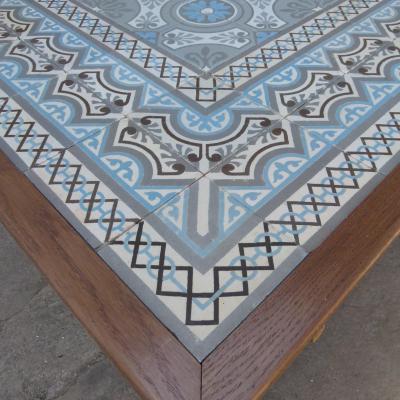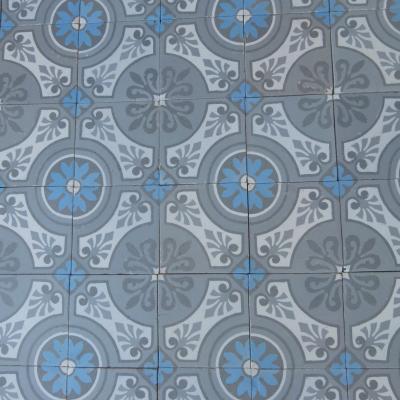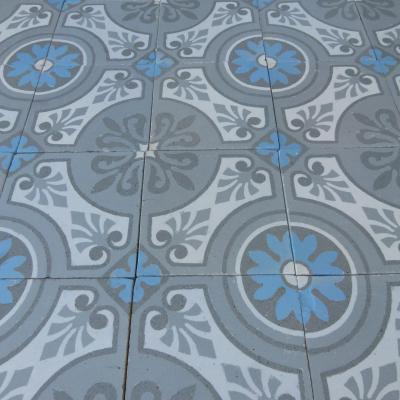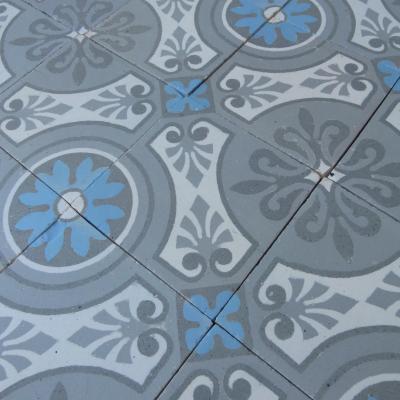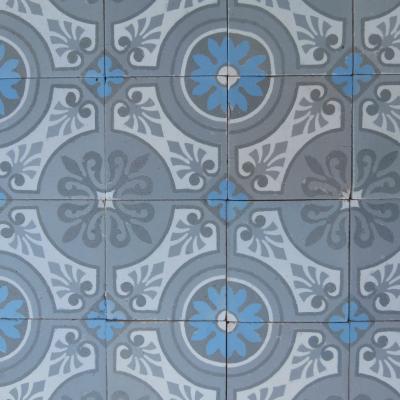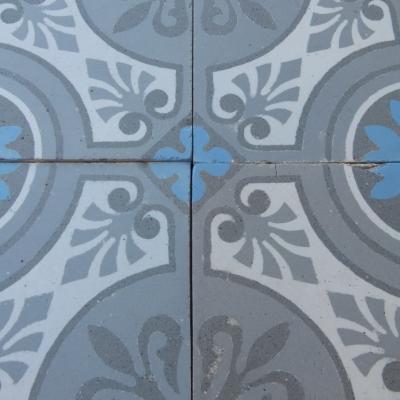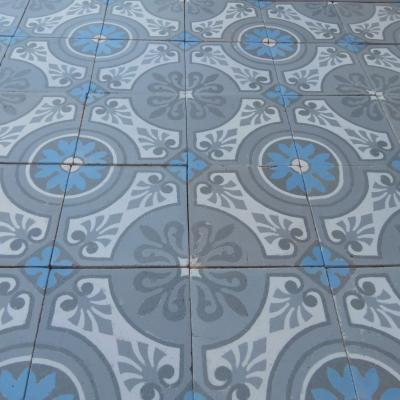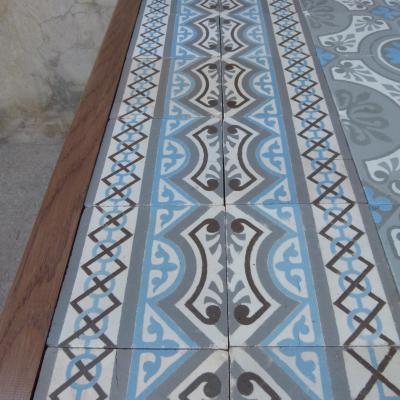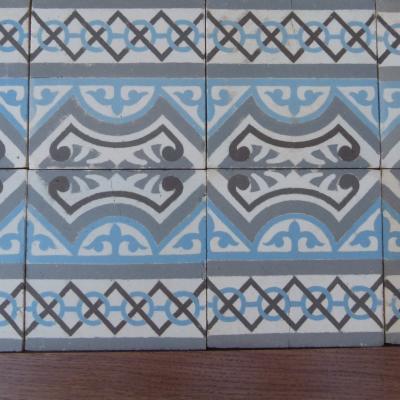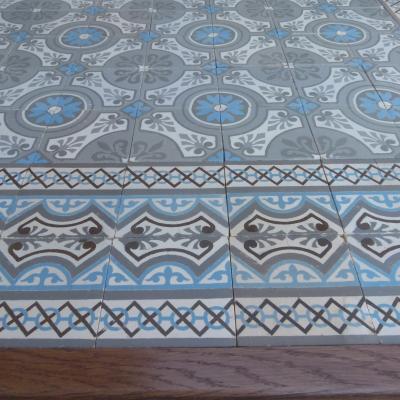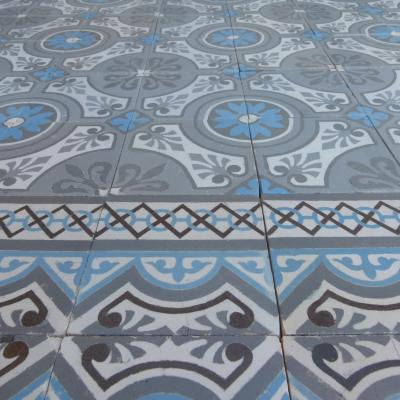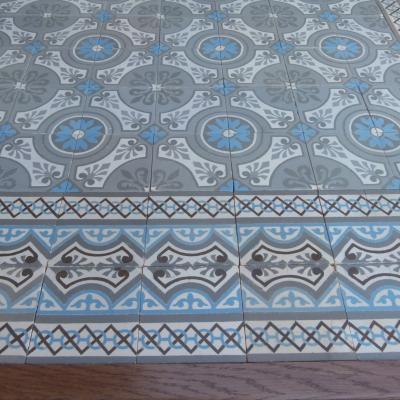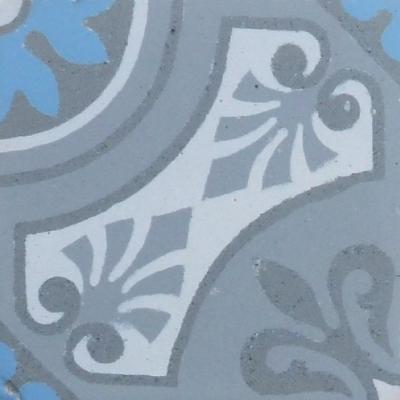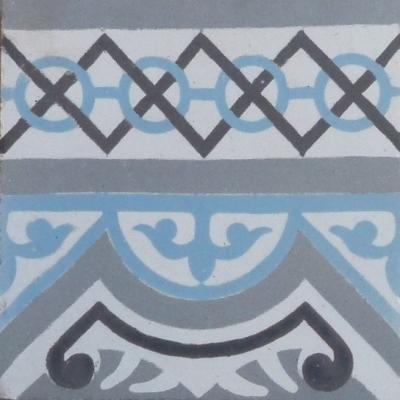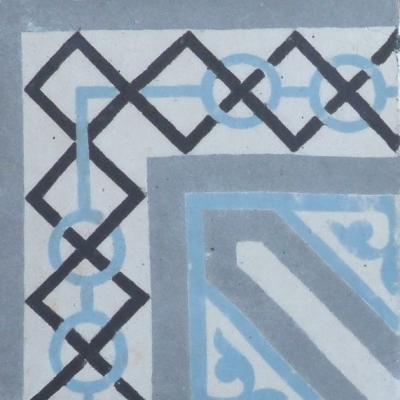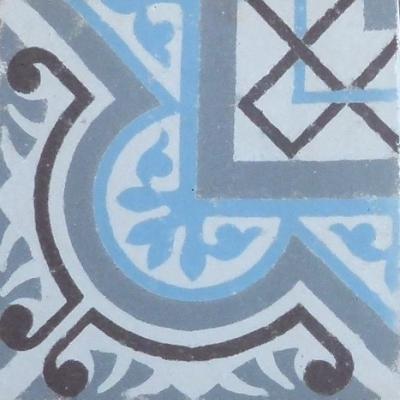9.5m2 / 102 sq ft. St. Remy, Chimay ceramic floor, early 20th century
This antique Belgian ceramic floor, dating from around 1905 to 1910, is a beautifully reclaimed and fully restored piece ready for installation. Covering an area of 9.5m2 or 102 square feet, the layout features 15cm / 5.9-inch square principal field tiles designed to form a tessellated four-tile pattern. This intricate design unfolds across interlinked motifs creating an elegant visual rhythm across the floor. The same-sized border tiles are laid back-to-back, in duplicate, boldly framing the central field tiles with symmetry and intention.
The palette leans toward cool tones, mixing soft greys, blues, charcoal, and off-white, giving the floor a refined, subdued aesthetic. Manufactured by Société Anonyme des Produits Céramiques St. Remy in Chimay, Belgium, the gallery includes scans from their period catalogue, presenting the tiles over 100 years ago, along with images of a randomly chosen section of the floor, representative of the whole.
Three of each of the internal and external corner border tiles have been reclaimed and, for the missing ones, a tiler can easily mitre-cut replacements from the regular border tiles. Following their restoration, these ceramics are in very good condition, a quality tile with only a few displaying minor edge nibbles or small chips that can be grouted in during installation to create a charming antique patina. As a highly fired tile with minimal surface porosity, it's ideal for both indoor and outdoor use and compatible with underfloor heating systems.
Tile quantities, give or take one or two:-
FIELD tiles - 300 – 6.75m2 / 72.7 sq ft
LARGE BORDER tiles - 115 plus 3 internal and 3 external corners – 2.73m2 / 29.3 sq ft. – 9.1 linear metres / 29.9 linear ft*
* double the linear meterage for a single border.
NOTE: Antique tiles were most commonly made in single or two tile moulds. Before current computer automation methods their moulds were made by hand and the colour slips mixed by eye. Kiln temperatures could also be variable, as could the firing time. The result is that tiles often display subtle size and thickness variations and there can be tonal variations in colours, owing to the slip mixing and/or firing time. All of this makes these handmade tiles unique and adds to their charm. Some floors display their subtle variations in size and tones, some not, but when photographing we always take a random section of the floor so that it is representative of the whole. A tiler should always dry lay a section of the tiles to familiarise himself with them before starting to fix lay.
CE310



